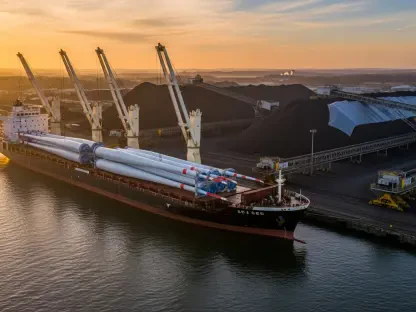In a bold move that has reignited debates over nuclear energy and safety, the current administration has unveiled a plan to repurpose Cold War-era plutonium from dismantled nuclear warheads into fuel for advanced nuclear reactors, signaling a significant shift in U.S. energy policy aimed at addressing critical power needs. This initiative seeks to meet the surging demand for electricity, driven by the rapid expansion of data centers supporting artificial intelligence technologies. With approximately 20 metric tons of surplus, weapons-grade plutonium at the center of this strategy, the proposal marks a departure from decades of disposal-focused approaches. It raises critical questions about balancing innovation with the inherent risks of handling such dangerous material. As the Department of Energy prepares to solicit industry proposals, the plan has already sparked sharp divisions between proponents of nuclear advancement and critics who warn of repeating costly historical failures.
Revitalizing Nuclear Energy with Historical Resources
A New Direction for Surplus Plutonium
The administration’s strategy to make surplus plutonium available to U.S. power companies represents a radical pivot from past commitments to non-proliferation and disposal. Under a long-standing agreement with Russia, the U.S. had pledged to dispose of 34 metric tons of this material, previously through conversion into mixed oxide (MOX) fuel for commercial use. However, that program was scrapped in 2018 after costs spiraled beyond $50 billion. The more recent method of diluting the plutonium with inert substances for storage at the Waste Isolation Pilot Plant in New Mexico, while safer, still carries a hefty price tag of around $20 billion. Now, an executive order issued earlier has paused much of this dilution effort, redirecting focus toward utilizing the plutonium as a viable energy resource. The Department of Energy is set to offer this material to industry players at little to no cost, though companies must shoulder the burden of transportation, facility design, and eventual decommissioning expenses.
Industry Opportunities and Challenges
This initiative opens a door for private companies to engage with advanced nuclear technologies, potentially strengthening domestic fuel supply chains amid growing energy needs. The administration views the stockpile—stored at secure facilities like Savannah River in South Carolina and Pantex in Texas—as a strategic asset to bolster energy independence. However, the path forward is fraught with obstacles, as firms must navigate the complexities of handling a substance with a half-life of 24,000 years, requiring stringent safety protocols. Beyond logistics, the financial implications are daunting, given the historical precedent of budget overruns in similar projects. While the prospect of free or low-cost plutonium may seem enticing, the associated costs of infrastructure and regulatory compliance could deter widespread participation. This gamble hinges on whether industry innovation can overcome the shadow of past failures and deliver on the promise of sustainable nuclear power.
Balancing Innovation Against Safety and Cost Concerns
Risks of Revisiting a Failed Approach
Critics of the administration’s plan have been vocal, pointing to the abandoned MOX program as a cautionary tale of what can go wrong when ambition outpaces practicality. Nuclear safety experts, including voices from the Union of Concerned Scientists, have described the current proposal as a dangerous misstep, arguing that converting weapons-grade plutonium into reactor fuel is neither secure nor cost-effective compared to existing disposal methods. The failure of the earlier initiative, which ballooned in cost and complexity, casts a long shadow over the feasibility of this revival. Opponents contend that the risks of mishandling such a volatile material far outweigh the potential benefits, especially when safer alternatives like dilution and storage already exist. This perspective underscores a broader tension within the nuclear sector, where the allure of technological progress often clashes with the sobering realities of safety and fiscal responsibility.
Policy Implications and Future Debates
The push to repurpose plutonium also reflects a deeper ideological divide over the role of nuclear energy in addressing modern challenges like climate change and electricity demand. While the administration champions this as a step toward energy innovation, the opposition highlights the need for rigorous oversight and a reassessment of priorities. The Department of Energy’s forthcoming request for proposals will likely serve as a litmus test for industry appetite and public tolerance for such a controversial policy. Stored at highly secure locations, including Los Alamos in New Mexico, the plutonium’s long-term management remains a complex puzzle, with no easy answers in sight. As debates unfold, the outcome of this initiative could shape nuclear policy for years to come, determining whether the U.S. can harness its Cold War legacy for a sustainable future or if it must revert to more conservative strategies to mitigate inherent dangers.
Reflecting on a Controversial Legacy
Lessons from a Divisive Policy Shift
Looking back, the administration’s decision to redirect Cold War-era plutonium toward nuclear power generation stood as a polarizing chapter in U.S. energy history. The ambitious plan to transform 20 metric tons of surplus material into fuel for advanced reactors sparked intense scrutiny, with critics decrying the echoes of past financial and safety missteps. Stored across secure Department of Energy facilities, the plutonium’s potential as an energy resource was weighed against the undeniable risks it posed, leaving policymakers and experts at odds. The executive order that halted traditional disposal methods marked a turning point, prioritizing innovation over caution in a bid to meet escalating power demands. This moment captured the intricate dance between historical burdens and modern aspirations, revealing the steep challenges of reimagining nuclear energy’s role.
Charting the Path Ahead
As discussions progressed, the focus shifted to actionable steps that could reconcile the divide between energy needs and safety imperatives. The Department of Energy’s outreach to industry for proposals became a critical juncture, offering a chance to test the viability of advanced reactor technologies while addressing public concerns. Future considerations included stricter regulatory frameworks to ensure safe handling of plutonium and transparent cost assessments to avoid the budgetary pitfalls of yesteryear. Encouraging collaboration between government, industry, and independent safety experts emerged as a vital strategy to build trust and refine the approach. Ultimately, the legacy of this policy rested on whether the U.S. could innovate responsibly, turning a relic of conflict into a cornerstone of sustainable power without compromising the security of future generations.









